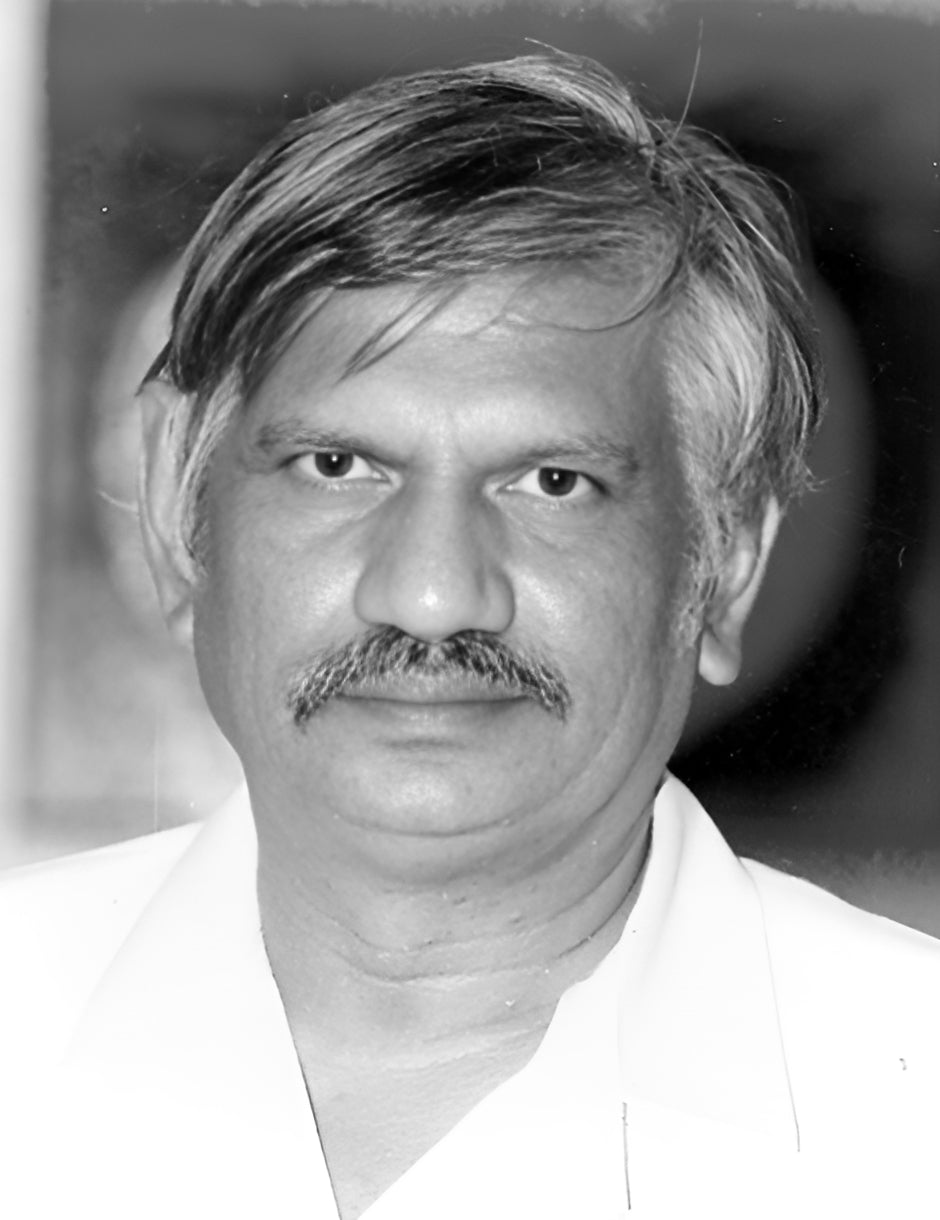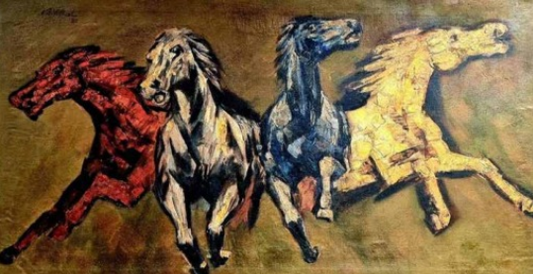
BOKKA VENKATA VITHAL
Bokka Venkata Vithal’s work stands out for its compelling fusion of human and animal forms, a recurring exploration that evokes rich symbolic layers drawn from the folk traditions and rural life of Maharashtra. Born in 1935, his formal education at Mumbai’s Sir J.J. School of Art laid the foundation for a visual language grounded in strong figuration and an expressive handling of form. This foundation enabled Vithal to navigate between the mythic and the everyday, imbuing his compositions with emotional depth and dynamic movement.
The relationship between Vithal’s painting and sculpture practices reveals a versatile artist deeply engaged with materiality and volume. His sculptures bring a tactile intensity to the themes he explored on canvas, translating symbolic narratives into physical forms that invite both visual and spatial interaction. This extension into three-dimensional work broadened the possibilities of his creative expression, highlighting his skillful command over diverse media. Vithal’s marriage to B. Prabha, herself a noted artist focusing on the human figure, formed a creative partnership that enriched both their practices. Their shared commitment to portraying human experience added significant momentum to the evolving post-independence Indian art scene. While Prabha’s oeuvre remained centered on the human form, Vithal’s work expanded this focus by weaving in cultural narratives inspired by Maharashtra’s pastoral and mythological heritage, creating a dialogue between individual emotion and collective tradition.
Living and working in Mumbai, Vithal participated actively in the city’s vibrant artistic milieu, contributing to the growth and transformation of modern Indian art until his passing in 1992. His paintings and sculptures stand as enduring testaments to his ability to balance tradition with innovation, often reflecting introspective themes grounded in Indian cultural realities. Vithal’s work invites contemplation of the complex relationship between form, symbolism, and cultural memory. His legacy is preserved through a diverse body of work that continues to engage viewers with its emotional resonance and formal inventiveness, reaffirming his place as a significant figure in Indian modern art.

